1. The Origins and Growth of Car Modification Culture
A. Early Beginnings: The Birth of Car Tuning
The concept of car modification dates back to the early days of the automobile industry. As soon as cars became widely available, owners began modifying their vehicles to improve performance or reflect their personal style. The first major wave of car tuning occurred after World War II when surplus military vehicles were repurposed for civilian use, and car owners began experimenting with different modifications.
The 1960s and 1970s marked a key period for the rise of car culture in the U.S., particularly with the development of drag racing, hot rods, and street racing. Car owners were drawn to the idea of modifying their vehicles to enhance power and speed, and iconic names such as Shelby, Yenko, and Hurst became synonymous with performance tuning.
B. The Shift Towards Aesthetic Customization
While performance tuning remained a primary focus, the 1980s and 1990s saw the rise of aesthetic modifications. During this period, there was a surge in the popularity of aftermarket body kits, lowered suspensions, and custom paint jobs. Car modification was no longer just about speed and horsepower; it also became a way for car owners to make a unique statement. Car shows, such as the Fast & Furious franchise, popularized the idea of “show cars” where visual appeal played a significant role.
The global spread of Japanese car culture, with icons like the Nissan Skyline and Toyota Supra, helped cement the role of aesthetics in tuning. Japanese car enthusiasts, influenced by street racing, contributed significantly to the rise of low-riding, aggressive body styles, and vibrant aftermarket modifications.
C. Modern-Day Car Modification
Today, car modification culture has expanded well beyond street racing. Car modification has become a hobby for people of all ages and backgrounds, with some modifications focusing on aesthetic beauty, while others enhance the car’s overall performance. Social media and online communities have allowed the culture to grow exponentially, with platforms like Instagram, YouTube, and specialized car forums providing a place for enthusiasts to showcase their builds, share tips, and connect with others globally.
Events like SEMA (Specialty Equipment Market Association) in the United States and the Tokyo Auto Salon in Japan have further fueled the popularity of custom vehicles, with automakers and aftermarket companies unveiling the latest innovations in tuning, design, and performance.
2. The Core Elements of Car Modification: Performance vs. Aesthetics
Car modification enthusiasts often grapple with the tension between enhancing the performance of their vehicles and making them look unique. The goal of performance tuning is typically to improve aspects such as engine output, suspension handling, braking capabilities, and overall driving dynamics. On the other hand, aesthetic modifications may involve body kits, unique paint jobs, custom interiors, and custom wheels to give the car a distinctive look.
A. Performance Modifications
Performance tuning can range from simple enhancements to more extreme modifications. Some of the most common performance upgrades include:
- Engine Tuning and Power Gains
- Turbochargers and Superchargers: Adding forced induction to an engine can significantly increase horsepower and torque. Enthusiasts often seek turbo kits or supercharger installations to get a boost in power.
- Exhaust Systems: Upgrading to a high-flow exhaust system allows the engine to expel gases more efficiently, improving performance and sound.
- Cold Air Intakes and Fuel Management: Cold air intake systems help to bring in cooler, denser air, which improves combustion and engine efficiency.
- Engine Control Unit (ECU) Tuning: ECU remapping allows for better fuel management and fine-tuning of engine parameters to increase performance.
- Suspension and Handling
- Lowering Springs and Coilovers: Lowering the vehicle improves handling and aerodynamics. Coilovers offer adjustable suspension for a more customized ride height and stiffness.
- Performance Shocks and Sway Bars: Upgrading suspension components such as shocks and sway bars can dramatically improve cornering ability and overall driving dynamics.
- Brakes and Tires
- Big Brake Kits: Upgrading the brake system with larger rotors and more powerful calipers improves braking performance, especially at higher speeds or on performance-oriented vehicles.
- Performance Tires: The right tires can make a significant difference in handling. Many tuners opt for high-performance rubber designed for better grip, traction, and durability.
- Weight Reduction
- Carbon Fiber Components: Replacing body panels with lightweight carbon fiber reduces weight and enhances performance.
- Race Seats and Harnesses: Installing lightweight racing seats and harnesses can reduce weight and improve driving ergonomics.
B. Aesthetic Modifications
The visual appeal of a modified car can be just as important to owners as performance. Some of the most popular aesthetic modifications include:
- Body Kits and Custom Fenders
- Aerodynamic Kits: Many enthusiasts opt for body kits that improve the vehicle’s aerodynamics. These kits typically include custom bumpers, side skirts, spoilers, and splitters designed to reduce drag and improve stability.
- Widebody Kits: These modifications expand the vehicle’s wheel arches, allowing for wider tires and a more aggressive stance.
- Paint Jobs and Wraps
- Custom Paint Jobs: Unique, custom paint jobs often feature vibrant colors or intricate designs that reflect the personality of the owner.
- Vinyl Wraps: An alternative to traditional paint jobs, vinyl wraps allow for customizable designs without the permanence of paint. Wraps can be swapped out easily, making them popular for temporary modifications.
- Wheels and Tires
- Custom Wheels: The choice of wheels has a huge impact on the overall look of the vehicle. Enthusiasts often choose lightweight, large-diameter wheels or those with unique finishes to make a statement.
- Low-Profile Tires: To achieve a more aggressive look and improve handling, tuners often opt for lower-profile tires that provide better road feedback and cornering performance.
- Interior Modifications
- Custom Upholstery and Seating: Upgrading seats with custom leather, alcantara, or racing-style bucket seats enhances comfort and aesthetics.
- Aftermarket Gauges and Displays: Many tuners install additional gauges and performance monitors to track data such as boost levels, exhaust temperatures, and air-fuel ratios.
- Steering Wheels and Shifters: A custom steering wheel or gear shifter can improve ergonomics and give the car a racing-inspired feel.
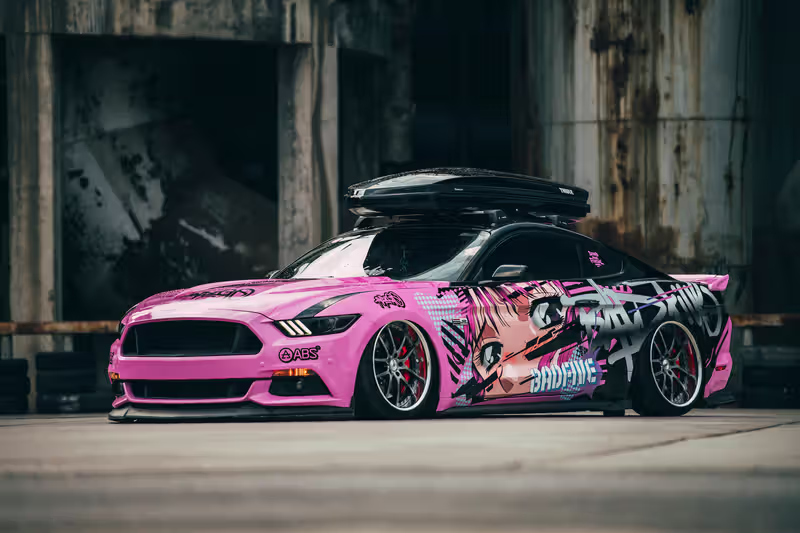
3. Striking the Right Balance: Individuality vs. Performance
The essence of car modification lies in finding the right balance between personal expression and performance enhancement. This balance depends on several factors, including the owner’s goals, the type of vehicle, and how the car will be used.
A. Practicality vs. Performance
Many enthusiasts struggle with ensuring that their modifications enhance performance without sacrificing practicality. For example, installing extremely stiff suspension components may improve handling but make the ride quality unbearable for daily driving. Similarly, adding a turbocharger can significantly boost engine output but may place added strain on the vehicle’s components, affecting reliability.
B. Cost and Budget
The cost of modifying a car can quickly escalate, especially when performance and aesthetic upgrades are involved. Modifying a car for performance often requires investing in high-quality parts that can withstand the added stresses of increased horsepower and aggressive driving. On the other hand, aesthetic modifications may offer more flexibility in terms of cost, depending on the complexity of the changes.
C. Community and Culture
For many car enthusiasts, the culture and sense of community around car modification is just as important as the modifications themselves. Tuning is often a way to connect with others who share similar passions. The balance between performance and individuality can be influenced by the car culture in a particular region, the types of vehicles that are popular, and the values of the local car community.
4. The Future of Car Modification Culture
A. Electric Vehicles and Modding
With the rise of electric vehicles (EVs), the landscape of car modification is changing. Electric vehicles offer different challenges and opportunities for modification, such as software tuning, battery upgrades, and regenerative braking systems. However, due to the complex nature of electric drivetrains and regulatory considerations, the scope for modification may be more limited compared to traditional internal combustion engine vehicles.
B. Sustainability and Eco-Friendly Tuning
As environmental awareness grows, more enthusiasts are seeking eco-friendly modifications. This includes upgrading to more efficient performance parts, choosing sustainable materials for aesthetic mods, and focusing on low-emission vehicle tuning. Hybrid and electric powertrains could also see more modifications in the future.
C. Tech Integration in Car Modifications
Advancements in technology are beginning to influence car modification culture. From performance tuning using advanced software to installing cutting-edge infotainment systems, technology is becoming an integral part of both performance and aesthetic modifications. Integration with mobile apps and cloud-based platforms may allow owners to customize and monitor their vehicle’s performance in real time.
Conclusion: The Ongoing Evolution of Car Modification Culture
Car modification culture will continue to evolve as technology advances and the automotive landscape shifts. The balance between individuality and performance will always remain a core part of the culture, but the way in which enthusiasts approach this balance will change with time. While performance may always be a driving force behind car modifications, aesthetics, sustainability, and technology will become increasingly important as the world of tuning moves into the future.
For car enthusiasts, modifying a vehicle is more than just a hobby—it is a way to express personal identity, enhance performance, and be part of a community. The rise of car modification culture shows no signs of slowing down, and as long as there is a desire for self-expression and performance enhancement, the world of car tuning will continue to thrive.

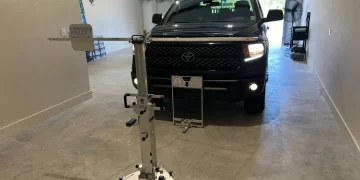




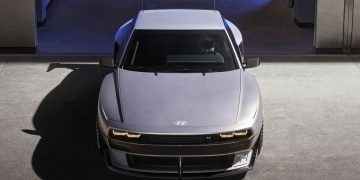
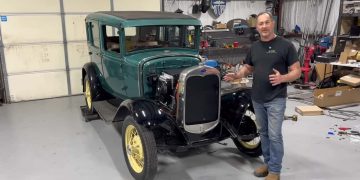



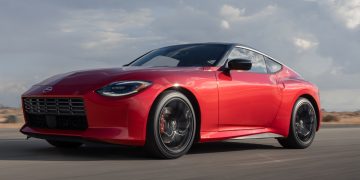






















Discussion about this post